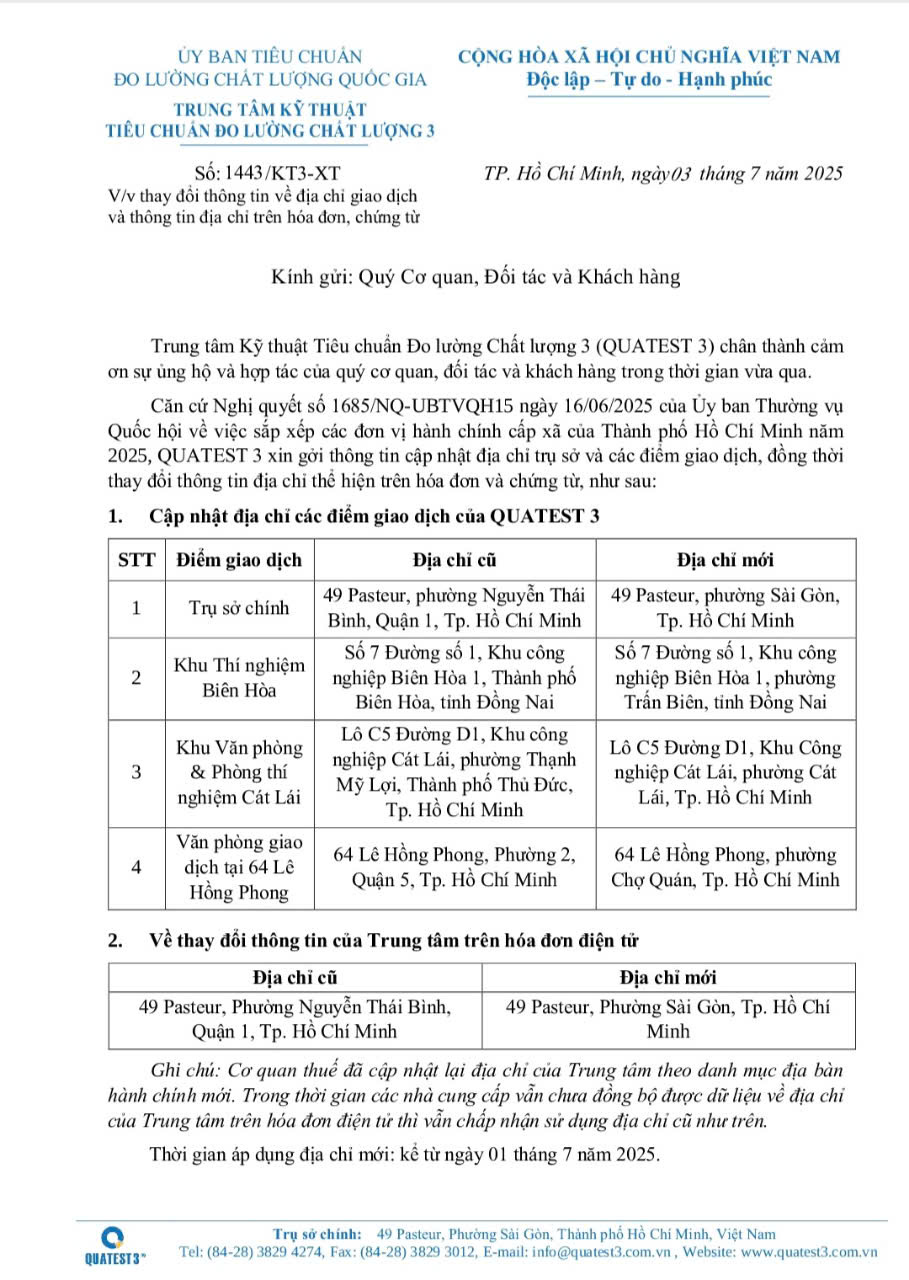The Importance of Calibrating EMC Devices
EMC testing offers several significant advantages and values including improving product quality, enhancing brand reputation, reducing warranty costs, increasing competitiveness and fully meeting relevant government agencies’ technical regulations, etc.

EMC Testing
Requirements for EMC Testing is currently mandatory in Vietnam and is regulated by several QCVNs issued the Ministry of Science and Technology (MOST), including those originally under the jurisdiction of the former Ministry of Information and Communications (MIC). For instance, QCVN 09:2012/BKHCN on electromagnetic compatibility for household electrical and electronic equipment and similar applications, amended by January 2018. The standard evaluates the level of electromagnetic emitted from devices, such as:
- Instant water boiler
- Hand-held electric drills
- Self-ballasted light bulbs
- Vacuum cleaners
- Washing machines
- Refrigerators and freezers
- Air conditioners

Calibration of EMC Testing Equipment at QUATEST 3
In the field of electronics and telecommunications, the precision and stability of testing systems are always vital factors. EMC testing equipment requires specialized calibration processes to ensure optimal performance and compliance with international standards.
Recent Research Achievements
Among more than 30 EMC testing laboratories designated by MIC (formerly), QUATEST 3 (under STAMEQ) stands out as a leading public science and technology institution designated to carry out EMC testing. Leveraging its extensive experience and technical calibration capacities, QUATEST 3 provides EMC equipment calibration services according to modern standard procedures and tools ensuring the highest accuracy including:
- Spectrum Analyzers
- Measuring Receivers
- RF Signal Generator
- Attenuators
- RF Power Meters

However, there are still many EMC-related measurements and measuring instruments, in reality, not yet having fully developed calibration procedures, such as measuring devices from 9 kHz to 30 MHz using LLA-Large-Loop Antenna, which are used in measuring interference of lightning equipment and household appliances (TCVN 7186:2018/CISPR 15:2018, TCVN 7492-1:2018/CISPR 14-1:2020) and Auxiliary devices (LISN – Line Impedance Stabilization Network, CDN – Coupling Decoupling Network) as stipulated in TCVN 6989-1-2/CISPR 16-1-2 and TCVN 7909-4-6/IEC 61000-4-6, which are essential for EMC emission measurement.
Recognizing the importance and demand for calibration in the EMC field, QUATEST 3’s experts have continued to advance research and develop specific to high-frequency and EMC applications. From October 2024 to March 2025, the expert team from QUATEST 3 has successfully developed mew calibration methods, enabling more proactive scheduling, cost savings and better service few customers and regulatory agencies, which cover:
- CDN-M-series - Coupling/Decoupling Networks
- LISN – Line Impedance Stabilization works (LISN)
- LLAS - Loop Antenna Systems (LLAS)

Large Loop Antenna System
QUATEST 3’s latest research results on calibration methods for magnetic field measurement equipment from 9kHz to 30 MHz using Large Loop Antenna as well as auxiliary devices such as CDNs & LISNs, is currently undergoing registration in accordance with Decree No. 105/2016/NĐ-CP. QUATEST 3 will soon implement these methods upon receiving approval, based on customer requirements.
To accompany businesses and serve regulatory needs, QUATEST 3 experts remain dedicated to pursuing innovative research, identifying new solutions and developing advanced calibration methodologies. QUATEST 3 continues to invest in modern equipment to improve accuracy and meet increasingly stringent standards in the field of EMC testing.
QUATEST 3





